|
Bowman-Hicks Lumber Company |
|
|
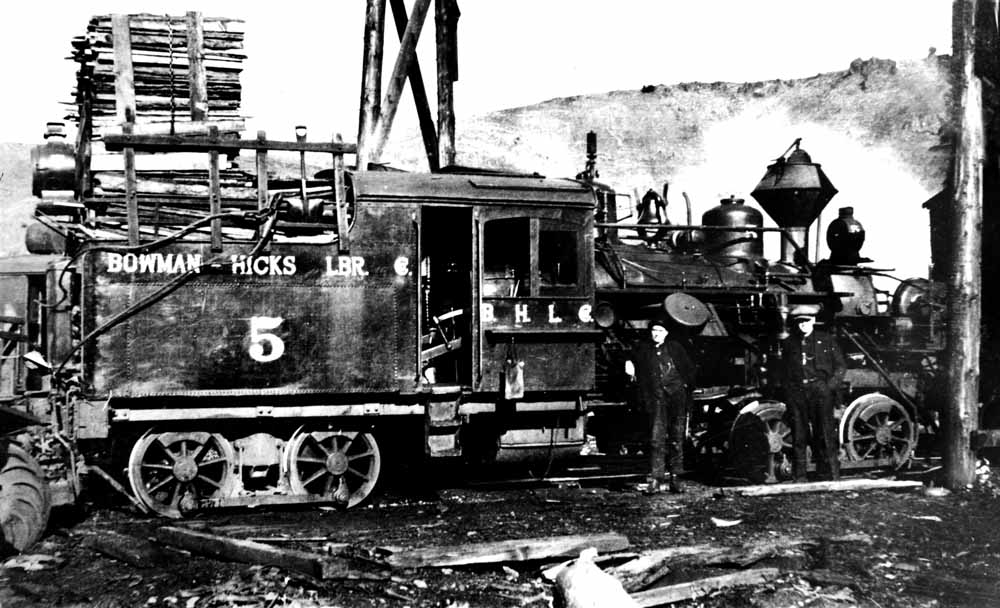 |
|
Bowman-Hicks Heisler #5 in Wallowa. John T. Labbe Collection of Logging and Railroad Photographs, 1892-2010, Washington State Archives,
Digital Archives, http://www.digitalarchives.wa.gov.
|
|
|
|
History The Bowman-Hicks Lumber Company got its start in Kansas City, Missouri, shortly after 1900. The company originally operated lumber manufacturing concerns in Louisiana, but by the early 1920s the company was nearing the end of its timber reserves in that area and, like many other loggers operating in the south, started looking for new opportunities in the west. In late 1922 Bowman-Hicks reached a deal to buy the George Palmer Lumber Company, which at the time had the large mill in La Grande; 100,000 acres of land, about two thirds of which was still in timber; and an extensive logging railroad system up Howard Creek and beyond off the Joseph Branch at Vincent. Bowman-Hicks hired H.N. Ashbey, formerly of the Long-Bell Lumber Company, in to manage the operations, and soon transferred the sales offices to Kansas City. The most immediate change the old Palmer operations faced was that the output of the mill almost doubled under the new ownership, from 30 million board feet a year up to between 50 and 60 million board feet. Essentially as Bowman-Hicks bought the Palmer company James Mimnaugh, manager of the Nibley-Mimnaugh operations at Wallowa, passed away, and by the following year the remaining stockholders decided to sell their company. Bowman-Hicks immediately moved to buy that company as well, and on 2 August 1923 they closed on that purchase. The company immediately set out to consolidate the two operations, starting with an extensive modernization and enlargement of the Wallowa mill. The company also let a contract to Morrison-Knudsen to rebuild the Nibley-Mimnaugh logging railroad running up Dry Creek and then extend it north to tie into the old Palmer railroad system. Bowman-Hicks estimated the timberlands from both of the acquired companies in the area would sustain the operation for many years to come, but by this point the logging had moved a substantial distance east of Palmer's Camp 5. After evaluating their options, Bowman-Hicks chose to build an entirely new town for its logging operations in Bishop Meadows. The town, named Maxville, quickly grew to house about 800 employees, including a good number of families. These included a number of African-American loggers the company moved to Oregon from their Louisiana operations, and like most company towns of the era the community was split along racial lines, with a separate school provided for the black students. Bowman-Hicks abandoned the old Palmer Camp 5 and the railroad down Howard Creek as Maxville opened. The Bowman-Hicks railraod operations remained busy through the rest of the 1920s, with the tracks gradually extended northwards towards Promise, Oregon. However, the crash in lumber prices through the late 1920s hit the company hard, and then the bottom falling out of all markets as the Depression dawned caused Bowman-Hicks to start economizing its operations. The economics of railroad logging did not favorably compare to truck logging, especially in the more diffuse timber stands characteristic of the area. Maxville closed in 1933, and the railroad system shut down sometime between 1933 and 1936. The company removed all rails and went to strictly truck logging. Bowman-Hicks operated the old Palmer mill in La Grande until the early 1940s, and then in 1945 cashed out of Oregon entirely when it sold the Wallowa mill and its remaining timberlands to the J. Herbert Bate Company of New York City, who ran the mill until 1964 when it closed. Boise-Cascade then bought the Bate company for the involved timberlands and promptly dismantled the mill. |
|
|
Maps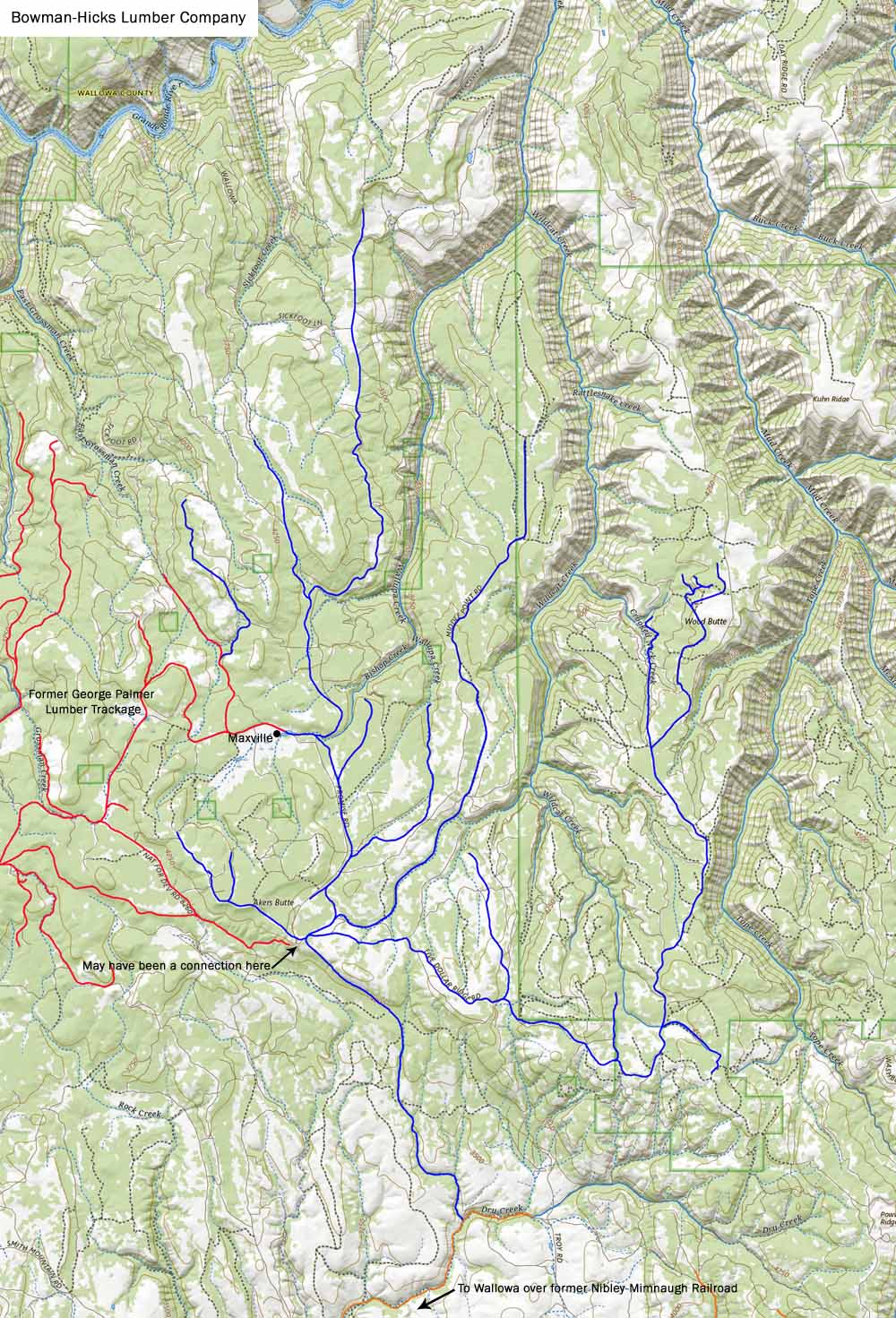 |
|
Rough and somewhat speculative map of the Bowman-Hicks logging railroad. Records are not always clear on which companies built what railroads, this is my best
educated guesses.
|
|
|
|
Locomotive Roster The Bowman-Hicks roster is somewhat uncertain as printed resources contain conflicting information. Following is the best guess at this time based on photos and available information. 1- Lima 2-Truck Shay, c/n 1894, Built 3/15/1907. 45 Tons. Built as Palmer Lumber Company #1; to Bowman-Hicks Lumber Company #1. For sale by 1934 and scrapped sometime shortly afterwards. 2- Lima 3-Truck Shay, c/n 2144, Built 4/3/1909. 70 Tons. Built as Palmer Lumber Company #2; to Bowman-Hicks Lumber Company #2; to Alaska Junk Company, Portland, Oregon; Scrapped 1/1940. 3- Lima 3-Truck Shay, c/n 2845, Built 11/24/1916. 100 Tons. Built as Palmer Lumber Company #3; to Bowman-Hicks Lumber Company #3; to Kosmos Logging Company #3, Kosmos, WA; to Kosmos Timber Company #3, Kosmos, WA; to U.S. Plywood Corp #3, Kosmos, WA. 4- Lima 3-Truck Shay, c/n 3008, Built 8/27/1918. Built as Spruce Production Corporation (U.S. Army)#700, Siemscarey, WA; Assigned to Siems, Carey-H.S. Kerbaugh Corp. (Clallam County Railroad), Siemscarey, WA; to Vancouver Barracks for sale 12/1918; to George Palmer Lumber Company #4 6/30/1919; to Bowman-Hicks #4; to Alaska Junk Company, Portland, OR. Scrapped, with boiler sold to L.H.L. Lumber Company, Carlton, Oregon. Much of the uncertainty on the roster centers around the Heislers purchased along with the Nibley-Mimnaugh operations. At least two published rosters show Bowman-Hicks bought three Heislers along with the company, but there is some question as to whether or not one of them survived long enough to be part of the sale. Both published sources show Bowman-Hicks numbered the other two #3 and #4, but these numbers conflict with the former Palmer Shays, and photos suggest they probably carried B-H numbers 5 and 6. The most likely roster, based on best guesses, are as follows: 5?- Heisler 2-Truck, 42-ton, c/n 1151, Built 8/1909. Built as Corvallis & Alsea River Railway #2, Corvallis, Oregon; to Portland, Eugene & Eastern, Eugene, Oregon; to L.R. Fields, Cochran, Oregon; to C.H. Wheeler Lumber, Cochran, Oregon; to Nibley-Mimnaugh Lumber; to Bowman-Hicks, probably #5. 6?- Heisler 2-Truck, 47-ton, c/n 1377, Built 6/1918. Built as U.S. Army Signal Corps #2, for Airplane Spruce & Lumber #2, Hoquiam, Washington; to Zimmerman-Wells-Brown (Dealer), Portland, Oregon; to Nibley-Mimnaugh; to Bowman-Hicks, possibly #6. 7- Heisler 2-Truck, c/n 1084, Built 1903. Formerly owned by Morrison-Knudsen and likely brought to Wallowa by that company during the reconstruction and extension of the logging railroad up Dry Creek, then likely purchased by Bowman-Hicks. Returned to M-K after operations ended. |
|
|
|
Photos |
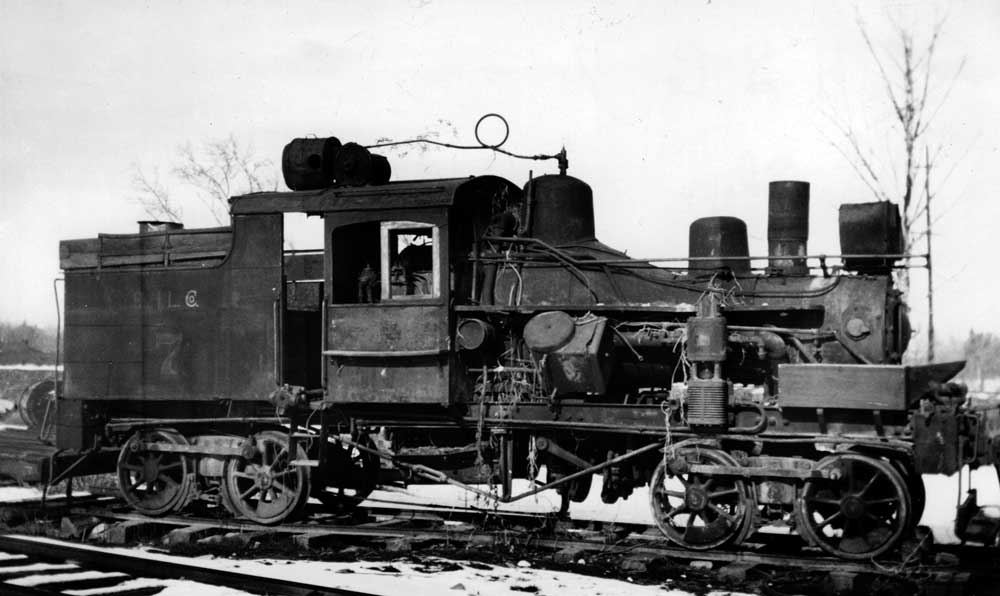 |
|
Bowman-Hicks #7 at Morrison-Knudsen in Boise on 1 January 1935. The large round object on the cab roof is the generator that powered the electrical lights
and other equipment on the locomotive. John T. Labbe Collection of Logging and Railroad Photographs, 1892-2010, Washington State Archives,
Digital Archives, http://www.digitalarchives.wa.gov.
|
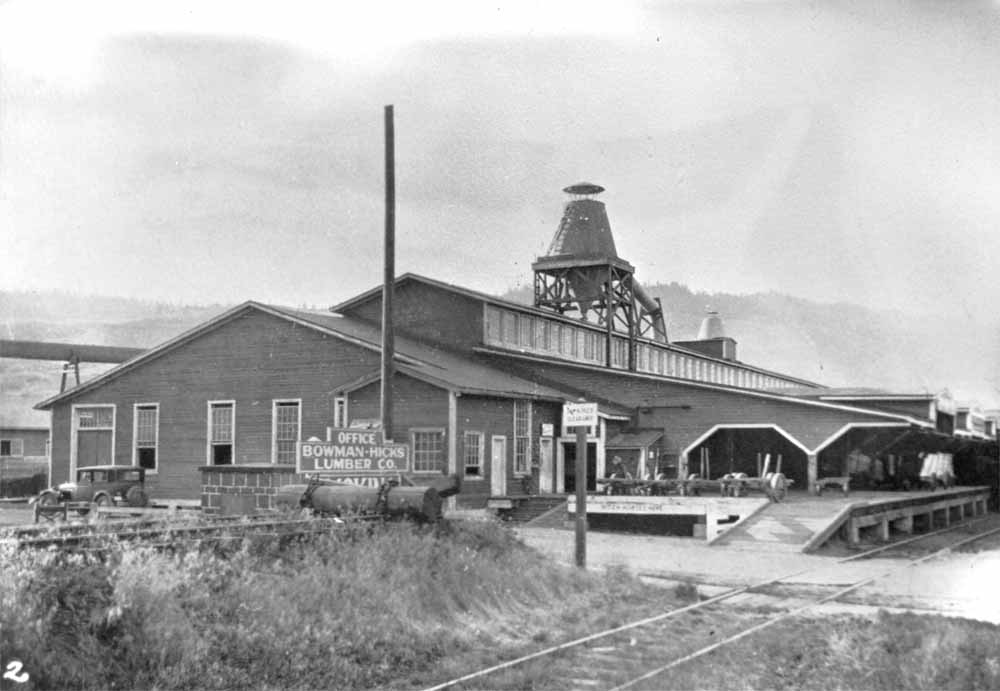 |
|
Part of the former Geroge Palmer mill in La Grande after Bowman-Hicks bought the company. J.B. Bane photo.
|
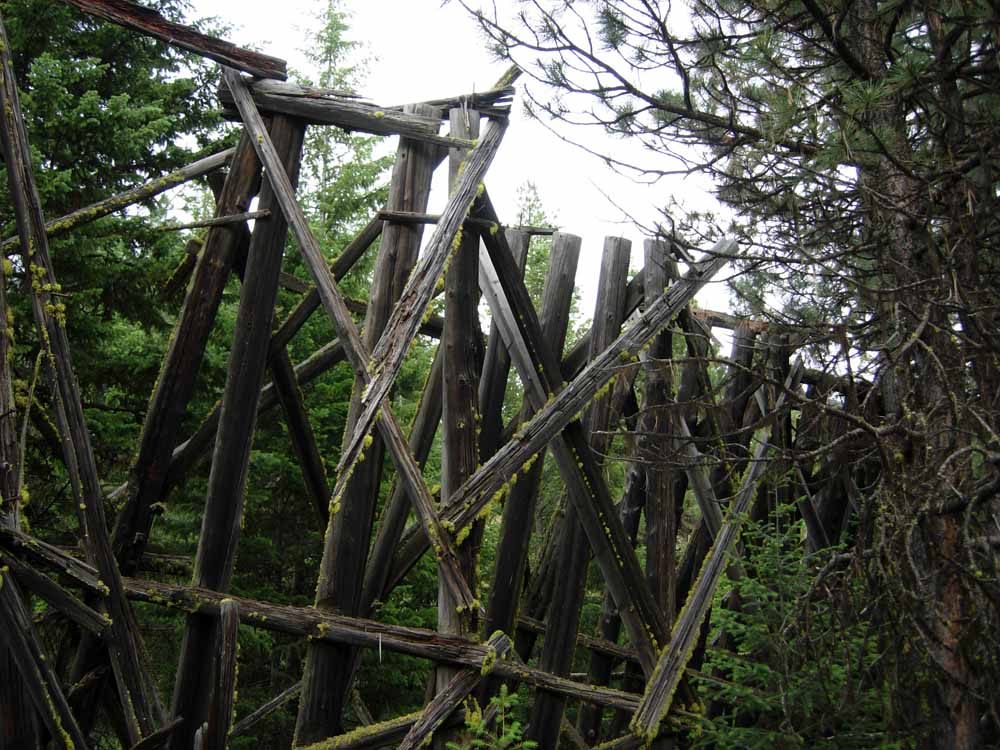 |
|
One of the more impressive physical remnants of the Bowman-Hicks operation is this trestle south of Maxville. J.B. Bane photo.
|
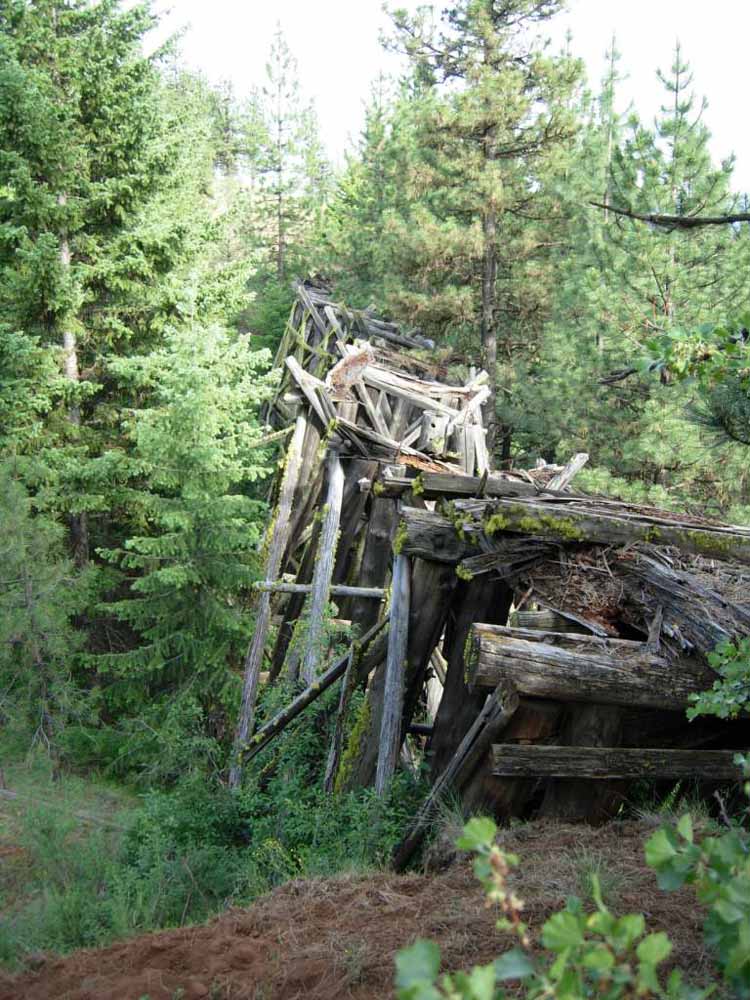 |
|
Another view of the trestle. J.B. Bane photo.
|
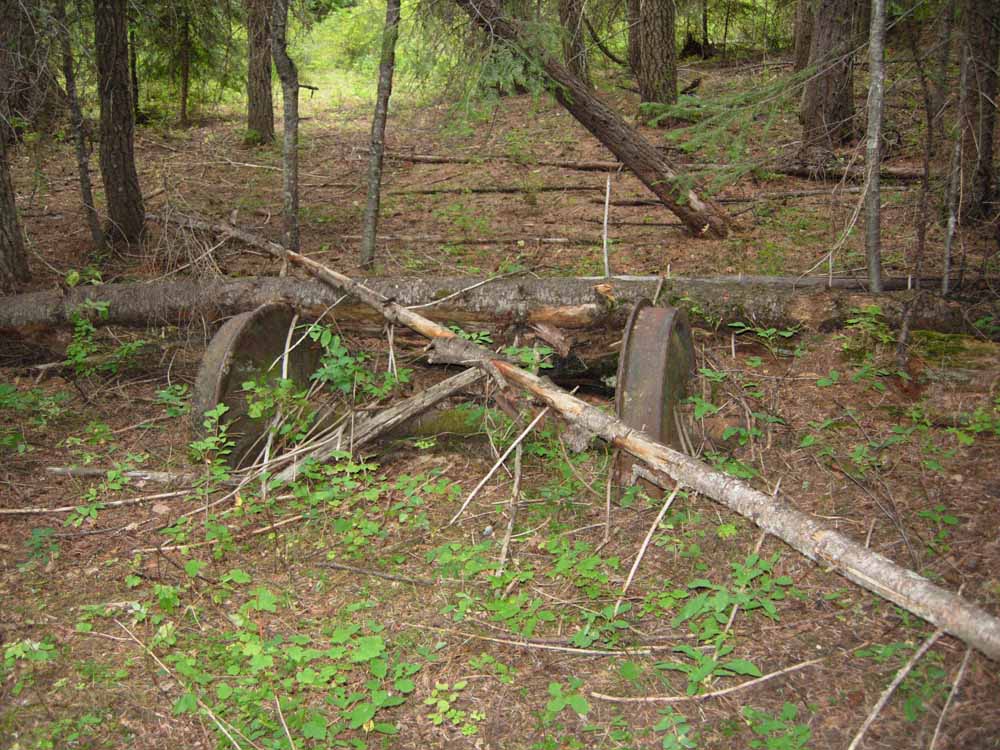 |
|
A wheelset buried in the forest in the eastern parts of the Bowman-Hicks operating area. J.B. Bane photo.
|
|
|
|
Oregon Public Broadcasting Oregon Experience devoted an episode to Maxville as seen through the eyes of the daughter of one of the African-American employees
Bowman-Hicks moved up from the deep south. The episode presents a fascinating glimpse as to what life was like in the town. Oregon Experience show on Maxville |
|
|